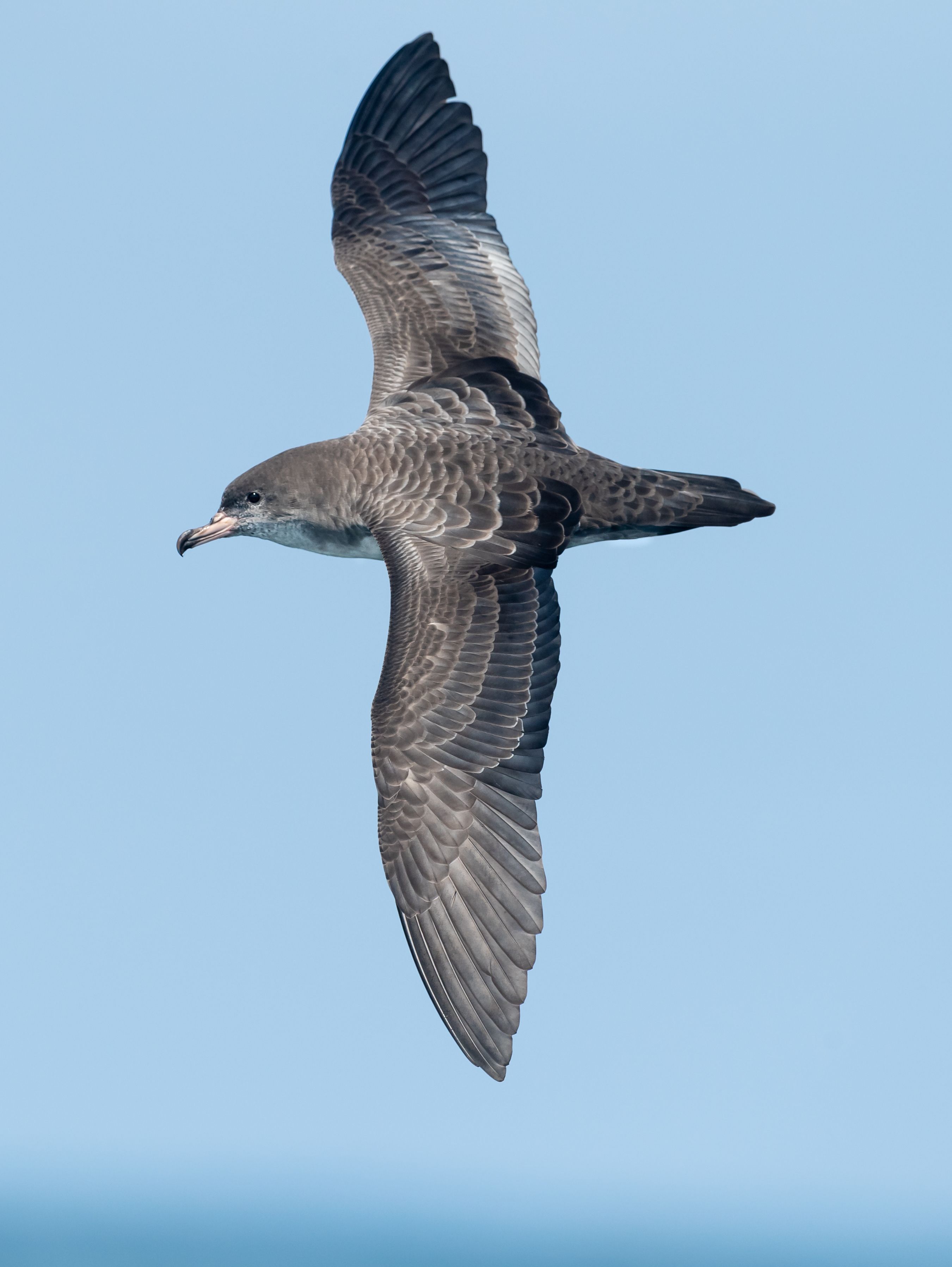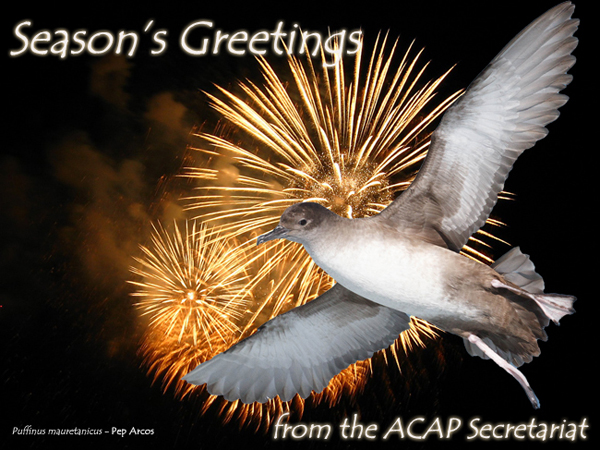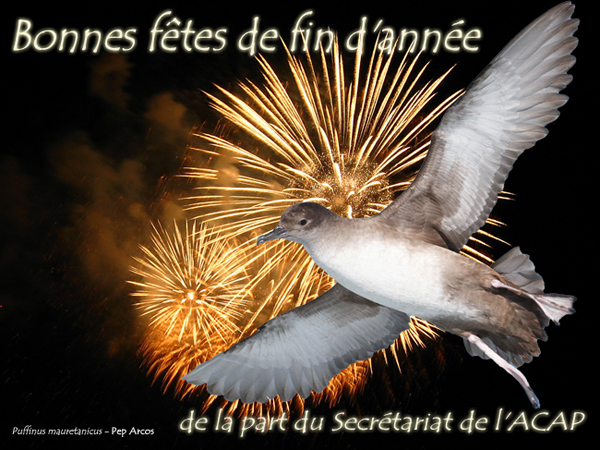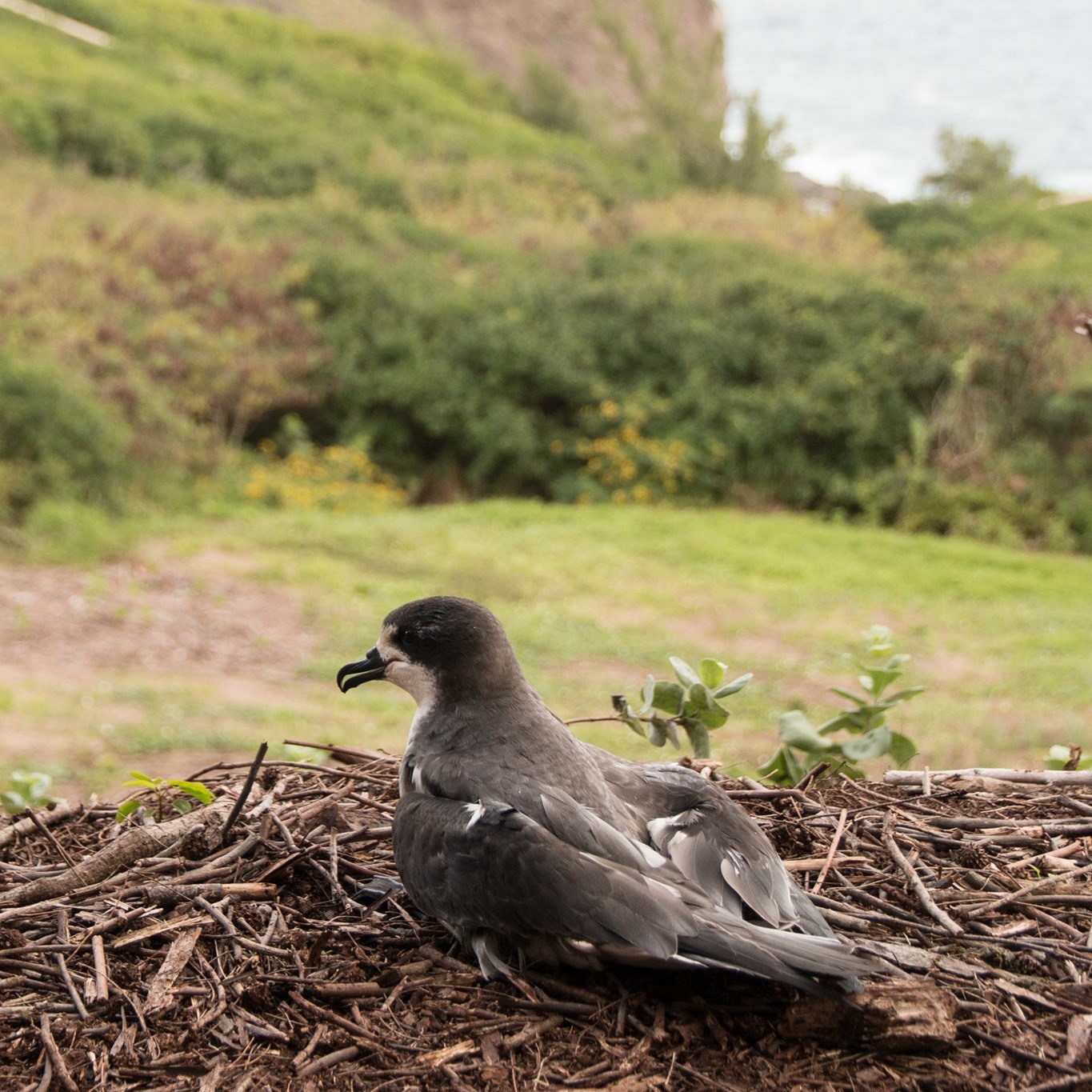
Pink-footed Shearwater at sea, photograph by Kirk Zufelt
Writing in Spanish, Rodrigo Silva (Programa Aves Marinas, Red de Observadores de Aves y Vida Silvestre de Chile) and colleagues have reviewed the impacts of light pollution on 17 species of Chilean seabirds (including the ACAP-listed Pink-footed Shearwater or Fardela blanca Ardenna creatopus) in the journal Ornitología Neotropical.
The paper’s abstract follows in both English and Spanish:
“Light pollution affects seabirds through the attraction to light sources and its fallout all over the world, being petrels and shearwaters the most affected species. Light pollution is increasing globally and its effects on seabirds will likely increase during the next years. A global assessment of this issue has been made, but there is no detailed information about South America; thus, the aim of this article is to assess the situation in Chile, in order to suggest technical measures to be considered into the national light pollution policy, which could promote the addressing of the issue in South America. To do so, a diagnosis on marine bird species was made through direct consultation with experts, a systematic review, and research in free access databases. We found 17 seabirds species affected by fallout in Chile, including six species not previously recognized in the literature. The impact is mainly distributed in islands and coastal localities, but also inland, as far as 100 km from the shore. Most of the management of this phenomenon done in Chile is restricted to the rescue and release of affected birds, although there is no evidence of the long-term success of this approach. Measures, such as turning off lights or light replacement are rare, implemented at a small scale, and have unknown results. An update of the light pollution policy is required in Chile, which should consider the protection of biodiversity as a goal, the national geographic scope beyond areas of astronomical interest, and including new lighting technologies such as LED lights. Finally, the development of stronger regulations for human activities, like lighting near sensible points, including seabirds’ breeding grounds, is especially important.”
“Resumen La contaminación lumínica afecta a las aves marinas por la atracción hacia fuentes de luz y su posterior caída (fallout) en todo el mundo, siendo los petreles y fardelas las especies más afectadas. La contaminación lumínica está aumentando globalmente y probablemen-te sus efectos sobre estas aves se incrementen en los próximos años. Pese a que existe una evaluación global de esta materia, no existe in-formación detallada para Sudamérica; por esto, el objetivo de este artículo es elaborar un diagnóstico de la situación en Chile, a fin de sugerir un enfoque técnico y político para el país y promover la discusión y acciones al respecto para la región sudamericana. Para ello, se elaboró un diagnóstico de las especies de aves marinas y territorios afectados a través de la consulta directa a investigadores, la revisión sistemática y búsqueda en bases de datos de acceso libre. En Chile, 17 especies de aves marinas son afectadas por la contaminación lumínica, incluyendo seis especies no identificadas previamente en la literatura. El impacto se distribuye principalmente en islas y localidades costeras, con algu-nos casos de localidades a más de 100 km al interior desde la costa. La mayor parte del manejo de este fenómeno en Chile consiste en el rescate y liberación de aves, aunque no hay evidencia del éxito de este enfoque a largo plazo. Medidas como el apagado o recambio de luces son escasas y sólo se han adoptado a pequeña escala y con resultados desconocidos a la fecha. Por ello, una actualización de la política de contaminación lumínica es requerida en Chile y debe considerar la biodiversidad como objeto de protección, el alcance geográfico nacional más allá de las áreas de interés astronómico y debe incluir nuevas tecnologías de iluminación, como luces LED. Finalmente, será de especial importancia la generación de regulaciones más estrictas sobre actividades humanas, incluyendo la iluminación en las cercanías a puntos sensibles, como colonias reproductivas de aves marinas.”
Reference:
Silva, R., Medrano, F., Tejeda, I., Terán, D., Peredo, R., Barros, R., Colodro, V., González, P., González, V., Guerra-Correa, C., Hodum, P., Keitt, B., Luna-Jorquera, G., Malinarich, V., Mallea, G., Manríquez, P., Nevins, H., Olmedo, B., Páez-Godoy, J., de Rodt, G.H., Rojas, F., Sanhueza, P., Suazo, C.G., Toro, F. & Toro-Barros, B. 2020. Evaluación del impacto de la contaminación lumínica sobre las aves marinas en Chile: diagnóstico y propuestas [Assessing light pollution impacts on seabirds in Chile: diagnosis and proposals]. Ornitología Neotropical 31: 13-24.
John Cooper, ACAP Information Officer, 18 December 2020




 English
English  Français
Français  Español
Español 


